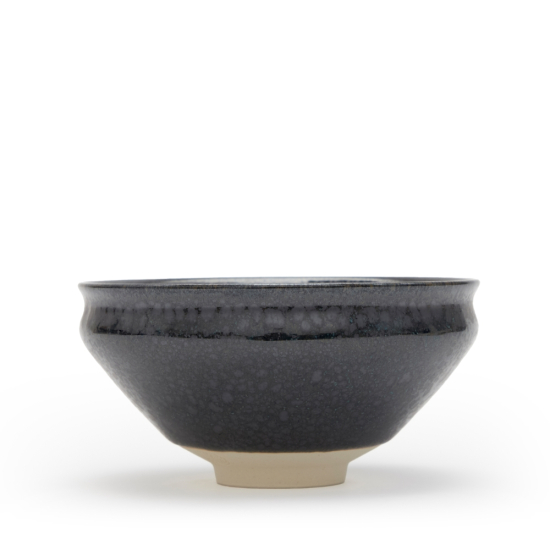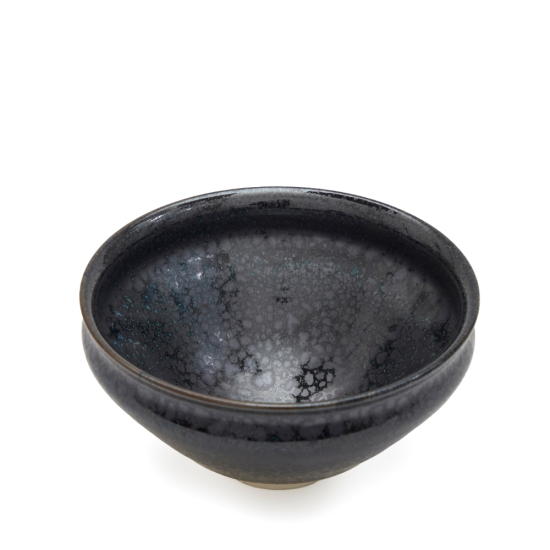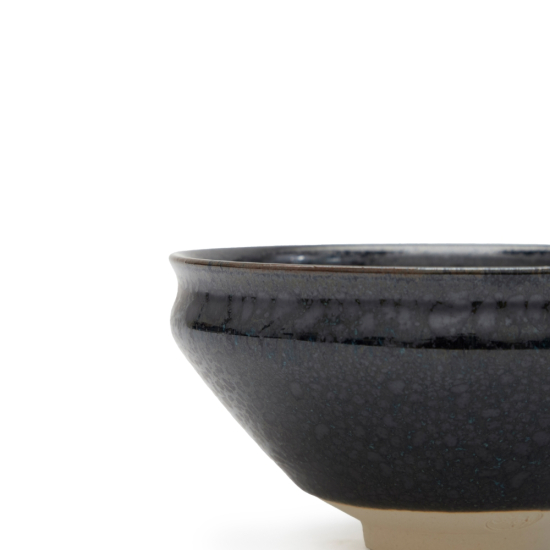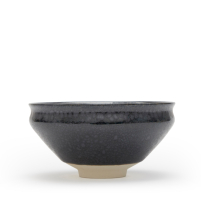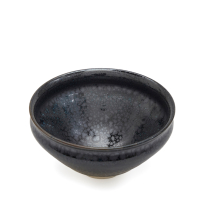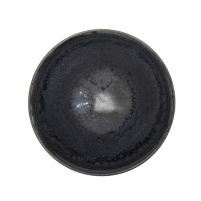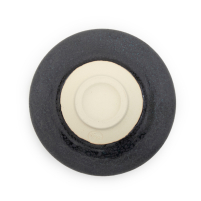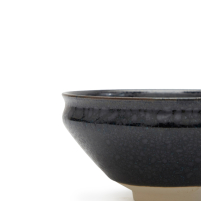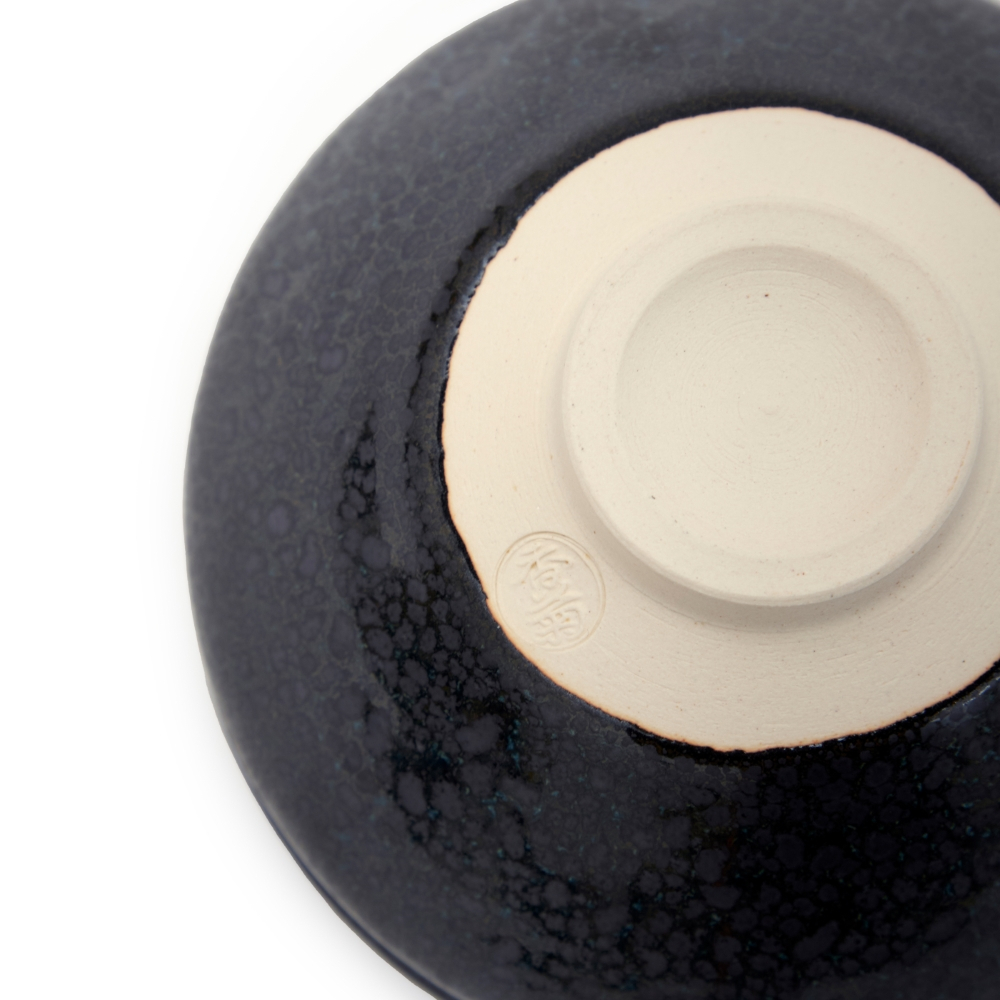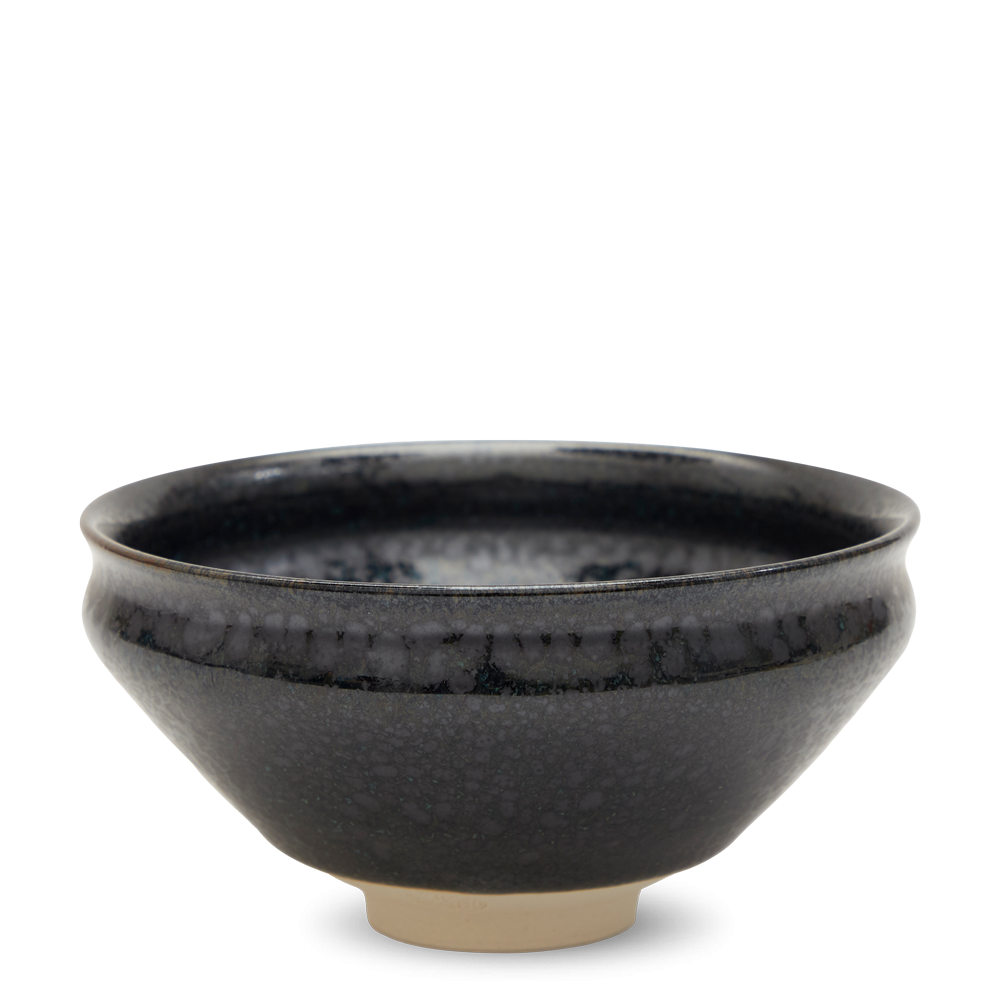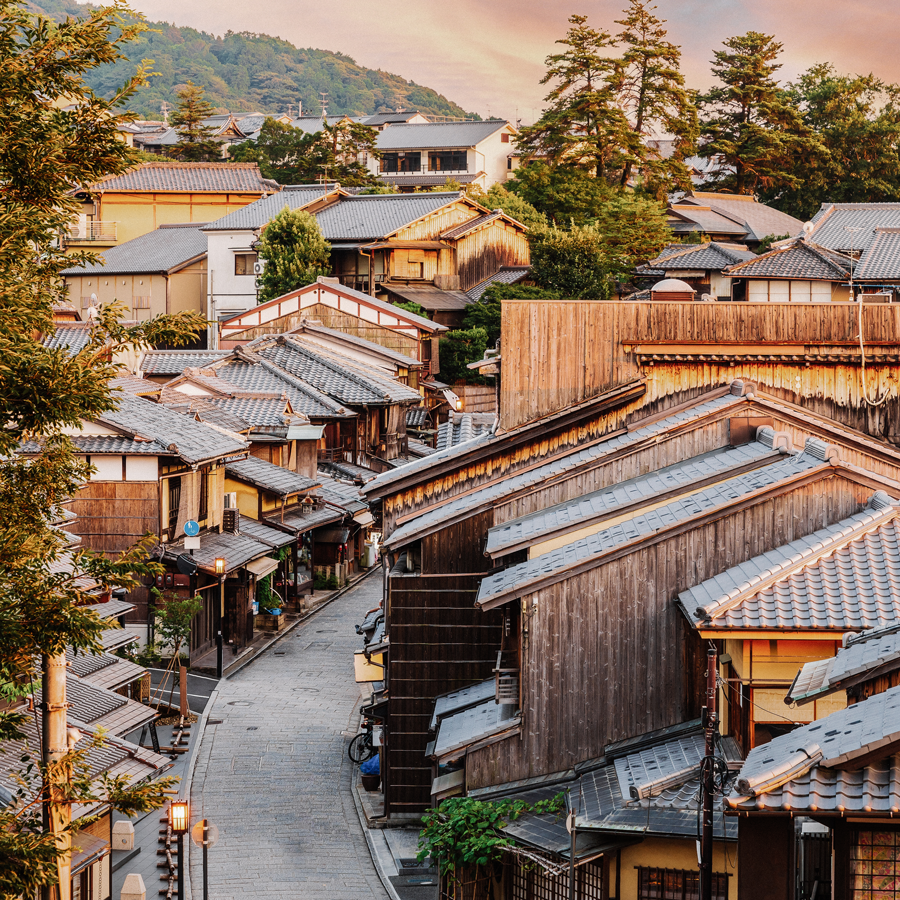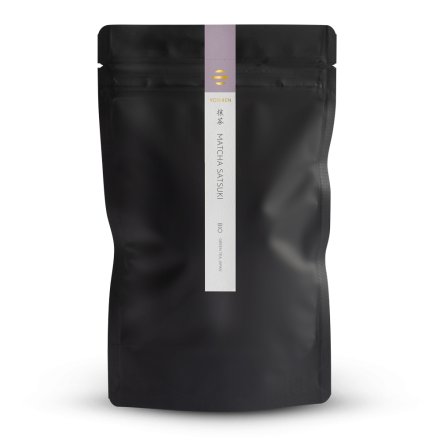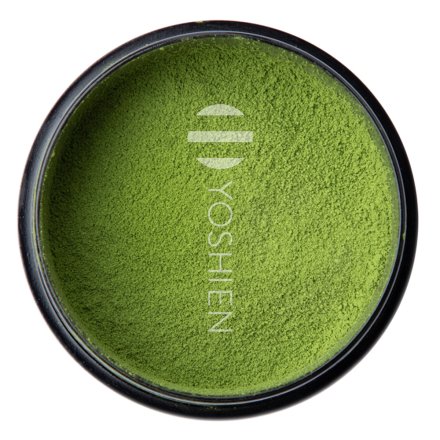Yuteki Tenmoku 油滴天目
Literally "heaven's eye", Tenmoku (天目) is a special type of Japanese pottery that imitates Jian ware from China. It is named after the Tianmu Mountain (天目山) in Zhejiang, where, once upon a time, some visiting Japanese Buddhist monks were served tea in iron-glazed bowls: a style that was popular during the Song dynasty (960–1279). These bowls were introduced to Japan during the Kamakura period (1185–1333) and became highly prized in the tea ceremony. Eventually the style was also produced in Japan, notably in Seto: one of Japan’s legendary Six Ancient Kilns. Made of feldspar, limestone and iron oxide, Tenmoku glazes can range in colour from black to brown, yellow and plum. The quicker a piece is cooled, the darker the resulting glaze.
Yuteki (油滴), literally “oil drop”, is one of the most admired Tenmoku glaze styles. Looking into a Yuteki Tenmoku tea bowl is like gazing at a starry night sky, with sparkling crystalline spots scattered across an ultra glossy jet-black glaze. A notoriously challenging technique to master, the oil spots are achieved through overloading the glaze with iron, which forms little glass droplets during firing that burst when they come up to the surface.



